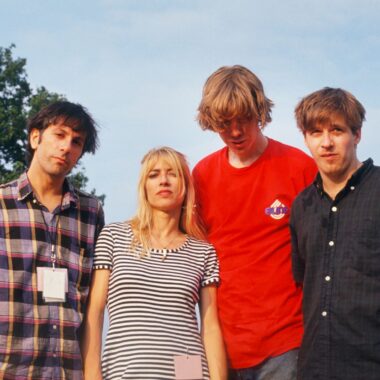
Sonic Youth, formed in New York City in 1981, are best known for their experimental approach to rock that pushed the boundaries of guitar music. At a time when punk’s raw immediacy was giving way to post-punk’s artier edge, Sonic Youth carved out a space that felt entirely their own. Using alternative tunings, heavy distortion, and feedback as a core part of their sound, they created music that was both abrasive and hypnotic. It was a collision of chaos and control, one that challenged conventional ideas of what a rock band could be.
Albums such as Daydream Nation cemented their reputation as innovators. That record, sprawling and ambitious, demonstrated how noise and dissonance could be shaped into something expansive and emotionally charged. It did not rely on traditional hooks or polished production, yet it carried an intensity and urgency that connected with listeners on a visceral level. Through their willingness to dismantle the rules of rock, Sonic Youth set a precedent for alternative music throughout the 1980s and 1990s, influencing countless artists across scenes and genres.
What made them particularly groundbreaking was their treatment of the guitar. Rather than seeing it as a fixed instrument bound by tuning and melody, they reimagined it as a generator of texture. A wall of feedback could serve as rhythm. A drone could take the place of a chorus. Their use of modified guitars, prepared techniques, and unconventional song structures meant that every performance was charged with unpredictability. For many musicians, this approach was liberating, a reminder that music could be more about sound and feeling than about perfection.
While Sonic Youth were not a shoegaze band themselves, their influence on the genre is undeniable. The shoegaze movement, emerging in the UK at the end of the 1980s, shared a fascination with atmosphere, texture, and the transformative possibilities of guitar sound. Sonic Youth’s fearless experimentation provided a blueprint for artists who wanted to treat guitars as tools for immersion rather than simply carriers of riffs or melodies. The noise-driven beauty of shoegaze owes much to the New York group’s pioneering spirit.
That influence stretches well into the present. Bands like Wornsteps have cited Sonic Youth as a touchstone, particularly in their ability to merge raw noise with moments of beauty. For Wornsteps, distortion is not just aggression, but a means of shaping emotion, a concept that echoes Sonic Youth’s philosophy. By blurring the line between chaos and harmony, they continue a tradition that Sonic Youth helped to define decades earlier.
The band’s legacy is vast, extending beyond shoegaze into grunge, post-rock, noise, and experimental music worldwide. They proved that dissonance could be as affecting as melody, that repetition could be hypnotic, and that vulnerability could exist within walls of sound. More importantly, they showed that music could be a laboratory for ideas, a place where risk and curiosity mattered more than polish.
Today, Sonic Youth are often spoken of in the same breath as other alternative pioneers, yet their particular brand of experimentation remains unique. They were architects of a sound that refused to conform, one that continues to inspire bands seeking to stretch the limits of guitar music. In shaping a language where noise and beauty coexist, they left behind a legacy that resonates as powerfully now as it did when they first picked up their guitars in New York’s underground.